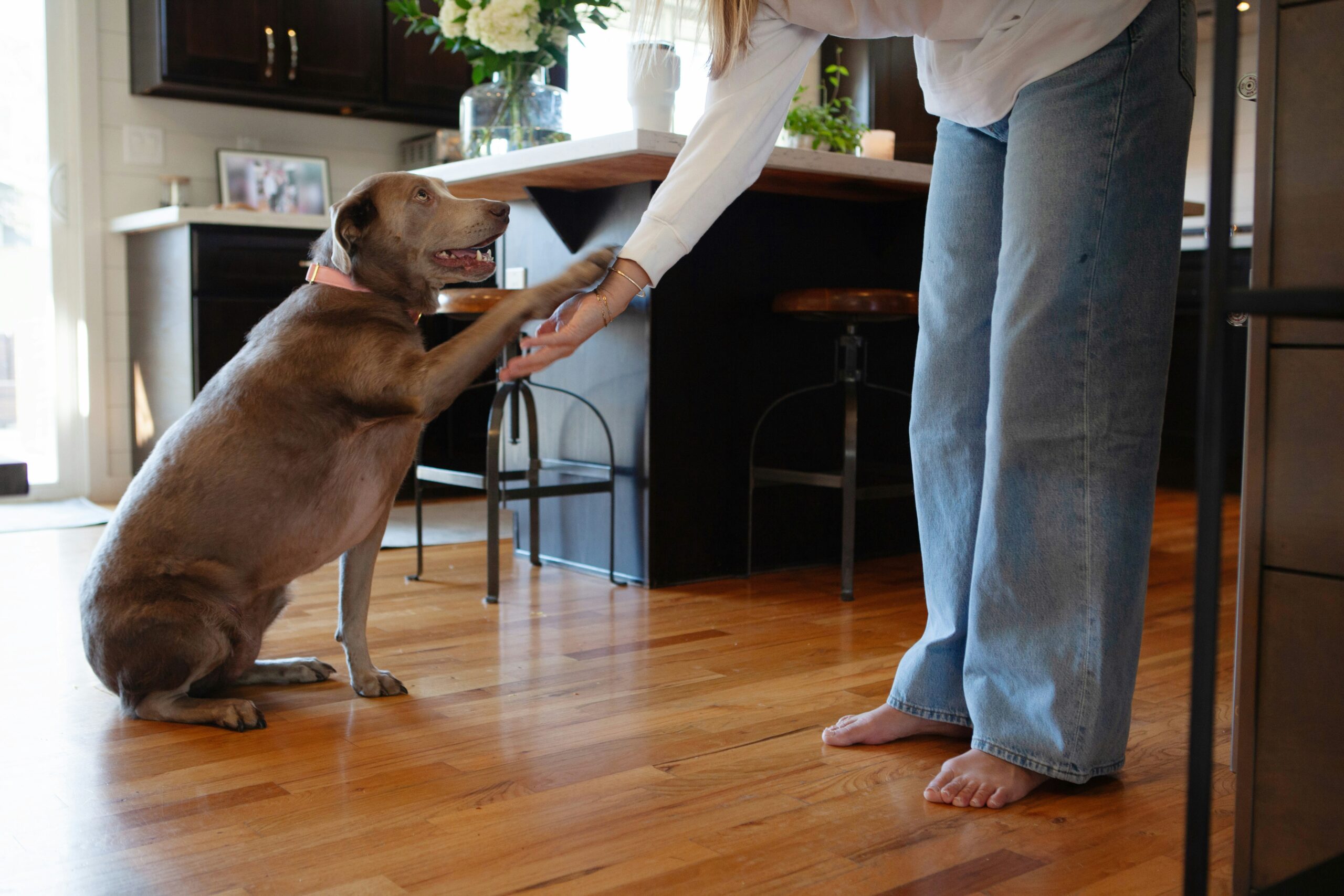How to Teach a Dog to Shake Hands
Training a dog is a bonding adventure, and few tricks are as charming—or impressive—as a good handshake. If you’re wondering how to teach a dog to shake hands, you’re in the right place; it’s a skill that’s easier than you might think and a hit at every dog park. Whether your pup’s an eager learner or a stubborn soul, this guide will show you how to teach a dog to shake hands with patience, treats, and a sprinkle of 2025’s training trends. Let’s turn your furry friend into a paw-shaking pro.
Why Shaking Hands Works
Dogs don’t naturally offer paw shakes—it’s a human trick—but it taps into their instincts. Lifting a paw mimics submission or play signals, and dogs love pleasing us for rewards. The American Kennel Club (AKC) notes it’s a beginner-friendly command that builds trust and focus. Plus, it’s adorable—who doesn’t melt when a dog politely “shakes”? It’s a win-win for fun and connection.
Step 1: Gather Your Tools
Start simple: grab small, soft treats (chicken bits, cheese) your dog loves—motivation is key. A clicker’s optional but handy for marking success. Pick a quiet spot—no distractions like squirrels or doorbells. I trained my mutt, Rusty, in the living room with pea-sized treats; he’d drool before we even began. Comfort matters too—keep sessions short, 5-10 minutes, to avoid burnout. You’re setting the stage for focus.
Step 2: Get the Sit Down Pat
Shaking starts with sitting. If your dog doesn’t sit on cue, teach that first—say “sit,” lure with a treat over their nose, and reward when their butt hits the floor. Practice until it’s solid; a wobbly sit throws off the shake. Rusty took a week to nail sitting—stubborn, but treats won him over. A steady base makes the next step smoother.
Step 3: Lift That Paw
With your dog sitting, hold a treat in your closed fist near their nose, then lower it to their chest. Most dogs paw at it—nature kicking in. The second their paw lifts, say “shake,” reward, and praise. I’d grin like a fool when Rusty swatted my hand; timing’s everything—catch the motion, not the miss. No paw? Tap their leg gently to nudge it up, then reward. It’s a dance of patience.
Step 4: Add the Cue
Once they’re pawing reliably, name it. Say “shake” right before they lift, then treat and cheer. Repetition wires the word to the action—dogs learn through patterns. Rusty got it in days, but my friend’s Beagle, Max, took weeks; every pup’s pace differs. Skip forcing their paw up now—let them offer it. Consistency turns a fluke into a skill.
Step 5: Fade Out the Treats
Treats kickstart learning, but you want a shake on command, not bribery. After they nail it, reward every other try, then randomly—keep them guessing. Swap treats for praise or a quick pat some days. Rusty’d shake for a “good boy” once the habit stuck. The PetMD crew suggests this gradual fade; it’s how pros build lasting tricks.
Step 6: Test in Real Life
Take it beyond the living room. Ask for a shake during walks, at the park, or with guests—proof it’s not a one-room wonder. Start easy—familiar spots—then up the chaos. Rusty froze mid-shake when a squirrel dashed by; we backtracked, and practiced, and he aced it later. Distractions test focus—reward extra for nailing it under pressure.
Step 7: Troubleshoot Setbacks
Not every dog’s a natural. If they won’t lift a paw, try the other leg—some favor one side. Pawing too hard? Reward gentle lifts only. Ignoring you? Up the treat value—chicken beats kibble. Max once sprawled out mid-session, bored; we switched to liver, and he perked up.
Step 8: Polish the Performance
Refine it for flair. Hold your hand higher for a stretch, or teach “other paw” by switching sides—say “left” or “right,” reward the match. Rusty learned a double shake—both paws—after weeks of grins and treats. Keep it fun; perfection’s optional, but polish impresses. Guests still talk about his “high five” twist.
Step 9: Leverage 2025 Trends
Training’s evolving in 2025. Smart toys—like treat-dispensing balls—pair with commands for engagement. Apps track progress, timing rewards to the second. Group classes go virtual. Rusty’d love a gadget that doles out snacks; I’m tempted. These tools boost basics like shaking into next-level skills.
Step 10: Celebrate the Bond
Shaking’s more than a trick—it’s teamwork. Each session strengthens your connection, teaching trust and communication. Rusty’d wag like mad after a good shake; it’s his “I got this” dance. The ASPCA says training deepens loyalty—your dog learns you’re the fun human with the goodies. Savor it; it’s the heart of the game.
Myths to Shake Off
Let’s debunk some fluff. You don’t need a “smart” breed—any dog can learn with time. Force doesn’t speed it up; yanking paws breeds fear. And no, they won’t shake for everyone—loyalty picks the audience. I thought Rusty’d never get it—he’s no genius—but persistence proved me wrong. Focus on facts, not folklore.
A Shaky Start, A Solid Win
My cousin’s Lab, Bella, was my first guinea pig. She’d sit, stare, and ignore my hand—zero interest. I switched to cheese, tapped her paw, and cooed “Shake”; On day three, she lifted it, tail thumping. Weeks later, she greeted me with a paw every visit—messy at first, masterful now. It took laughs, spills, and a treat stash, but we did it. Your story’s waiting.
Final Thoughts: How to Teach a Dog to Shake Hands
Mastering how to teach a dog to shake hands is a journey of treats, timing, and trust. Start small, build steady, and tweak as you go—your dog becomes a handshake champ, and you get the brag rights. In 2025, it’s a classic with a modern edge. So grab some goodies, a grin, and your pup—those paws are ready to shake the world.


No responses yet